Edward Michael Balls is a British broadcaster, writer, economist, professor and former Labour politician who served as Shadow Chancellor of the Exchequer from 2011 to 2015. Ed was born on 25th February 1967 in Norwich, Norfolk and apart from his time in politics he is also recognised for his acrobatic appearances on Strictly Come Dancing and his TV documentaries. As a child he grew up in a family that wanted to make the world a better place. Ed knows very little about his family history and his mother Carolyn’s dementia means she can’t share their roots with him.This being the case he sets out to discover what kind of characters his ancestors were. His discoveries will be aired in the Who Do You Think You Are? programme in an episode that is to be broadcast on BBC One on Tuesday 30th November 2021.
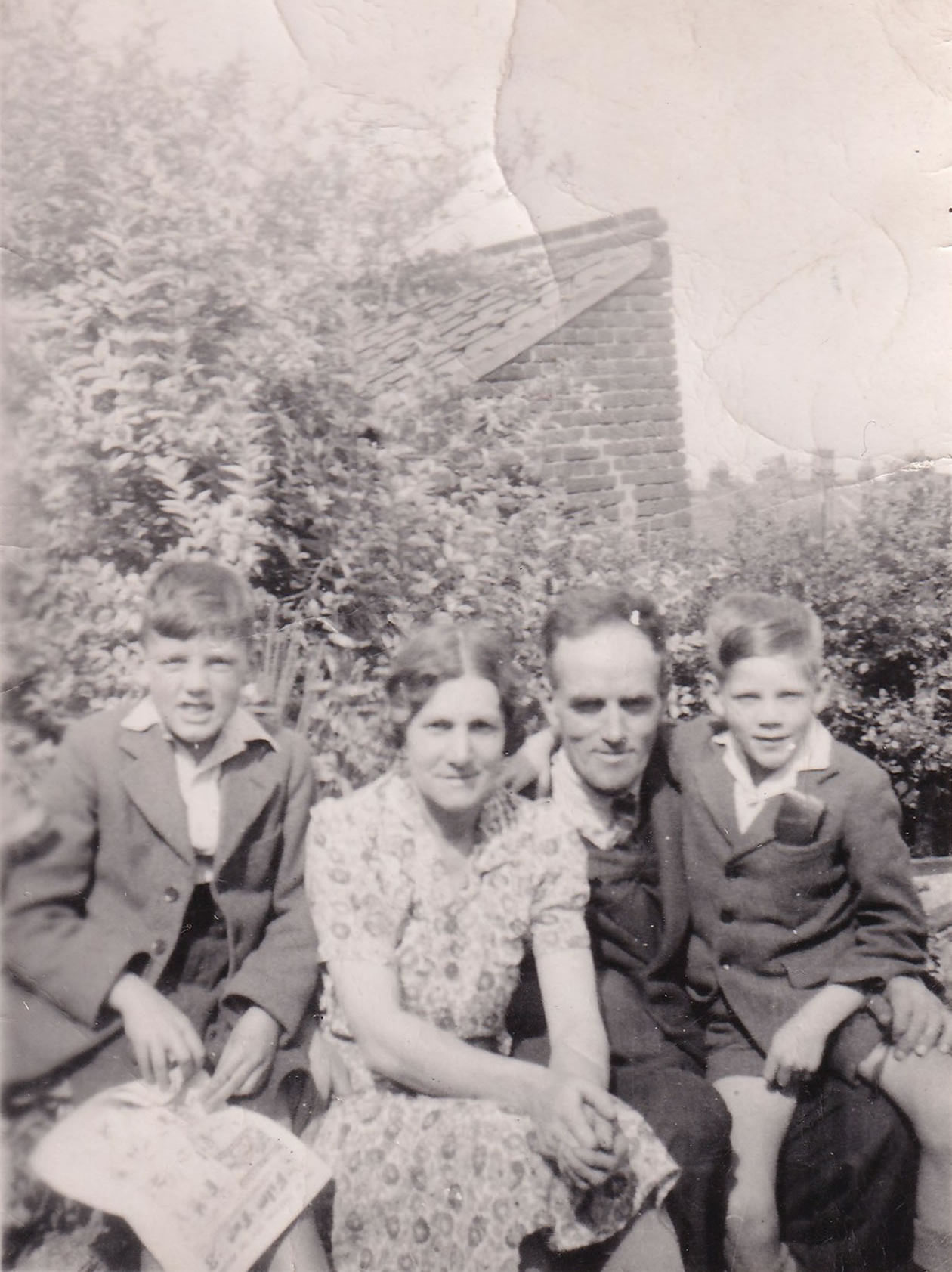
To make a start on the research, Ed visited his father Mike and his Uncle John in Norwich to talk about their family. Ed had, up to that point, assumed that they were from stock that had toiled on the land, but he was surprised when his father and uncle told him that they were from more of a middle class background with a surgeon ancestor who had served on Nelson’s ship the Victory. They produced a picture of his great grandfather, Frank Balls who had been an accountant by training, but had also been involved with Norwich prison helping prisoners after they were released. Also in the picture is Ed’s great grandmother Jessie Dunbar, whom Ed’s father thought had been the daughter of a Cathedral Architect and came from Scotland.
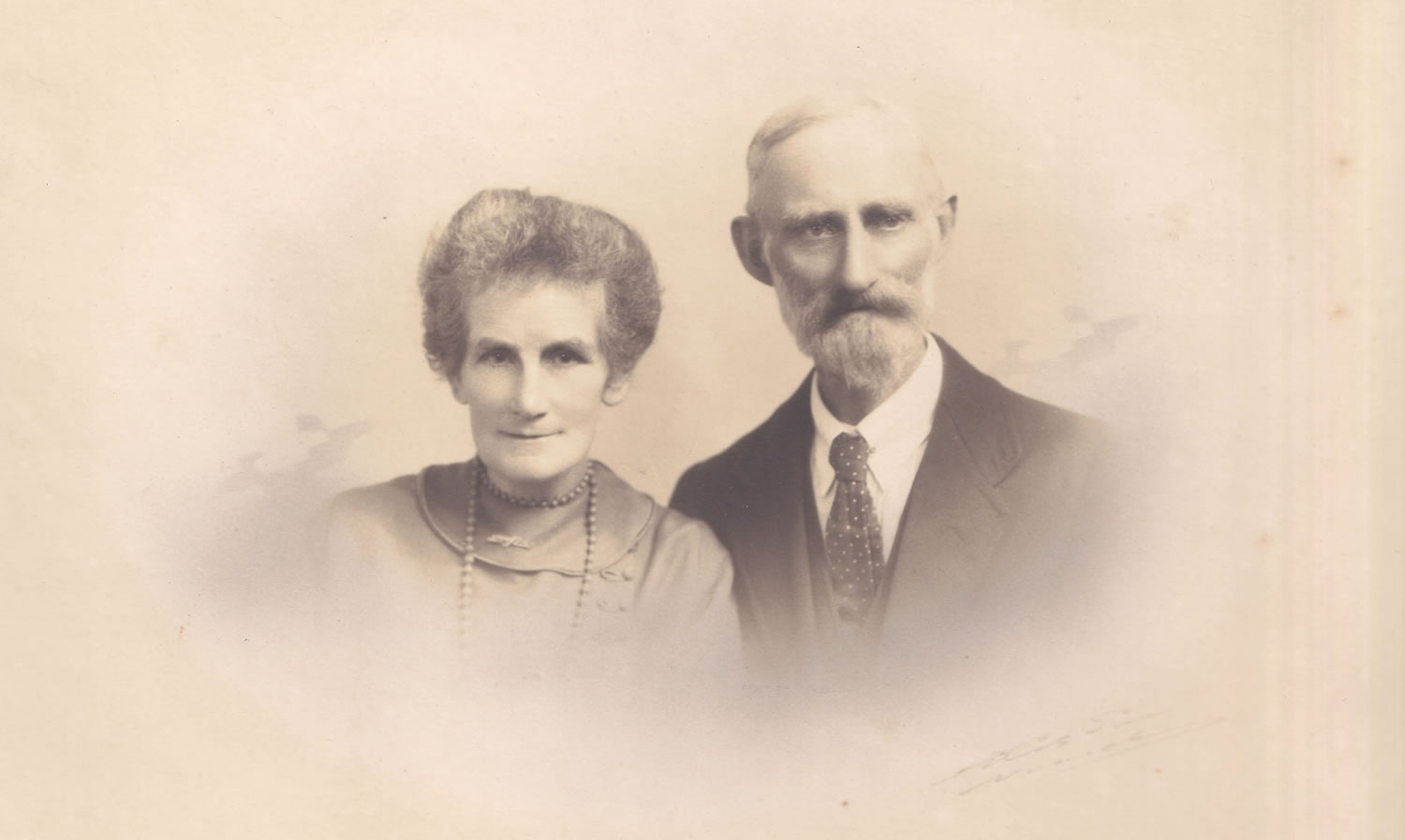
As with many of us there are family stories that have been passed down the generations and while they may contain a germ of the truth they can sometimes have become distorted over the years. When Ed gets a copy of the marriage certificate for his great grandparents it shows that Frank Balls was 28 at the time that he married 27 year old Jessie Maria Dunbar on April 4th 1888. While the groom lived in Norwich, the bride was from Ramsgate and this is at odds with the family story that she had been Scottish. Her father is listed on the document as Henry Douglas Dunbar, a painter and not a Cathedral Architect as Ed’s father had believed. Research we have done on TheGenealogist discovers the banns that had been read in the Norfolk parish of the groom clearly indicating that Jessie Dunbar’s parish had been St Georges, Ramsgate in Kent.
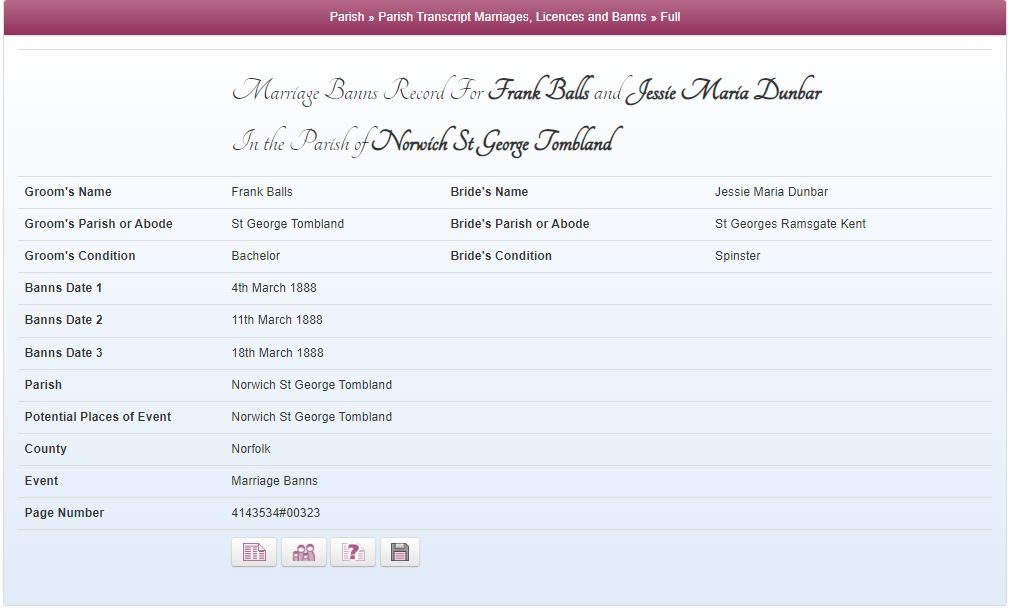
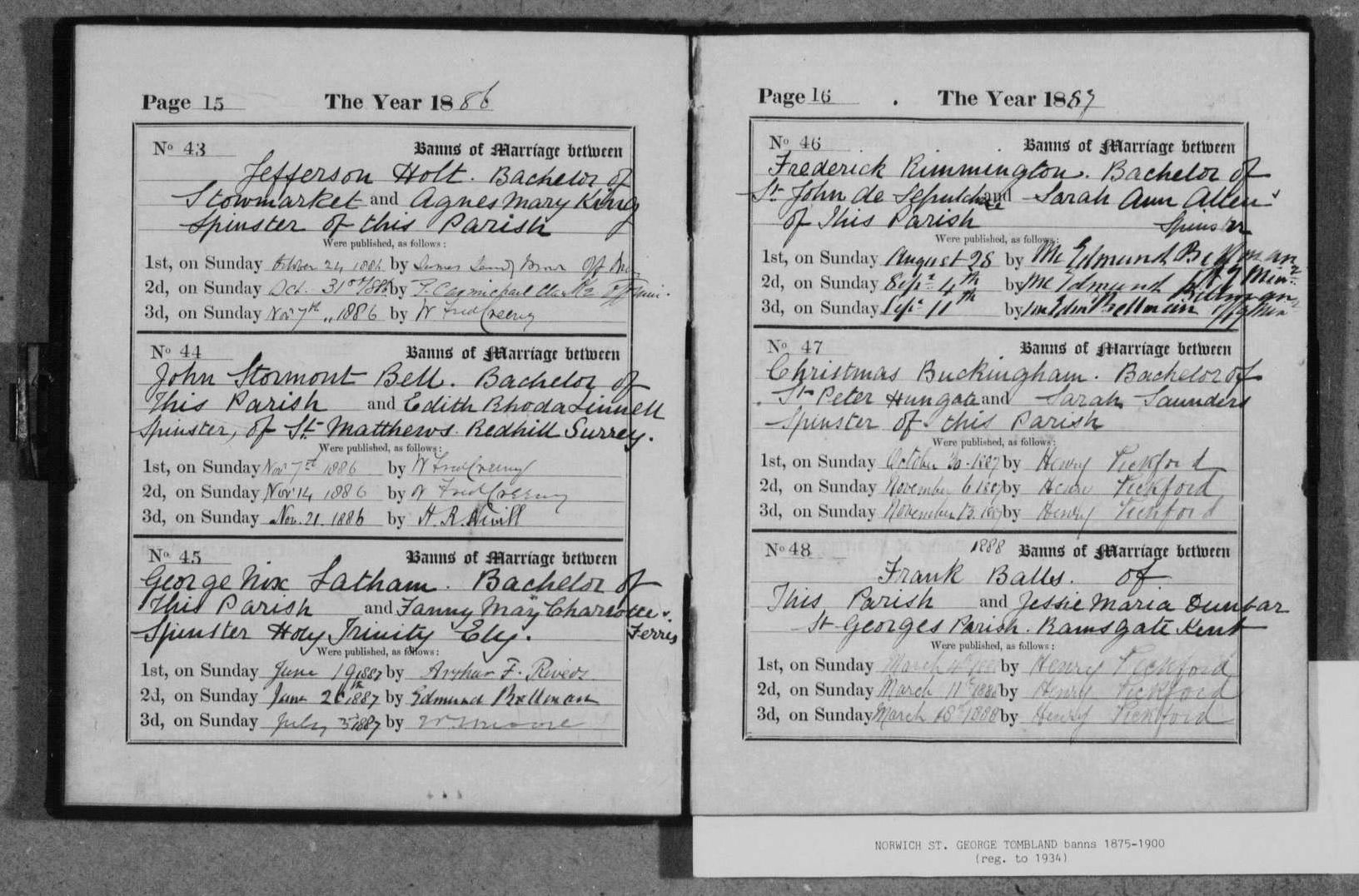
We can also use the power of the search facilities provided by TheGenealogist to go back a generation and find the marriage records for the bride’s parents, Henry Douglas Dunbar and Mary Janet Holloway in Ashford, Kent. This confirms that Henry was a painter and the son of a Surgeon.
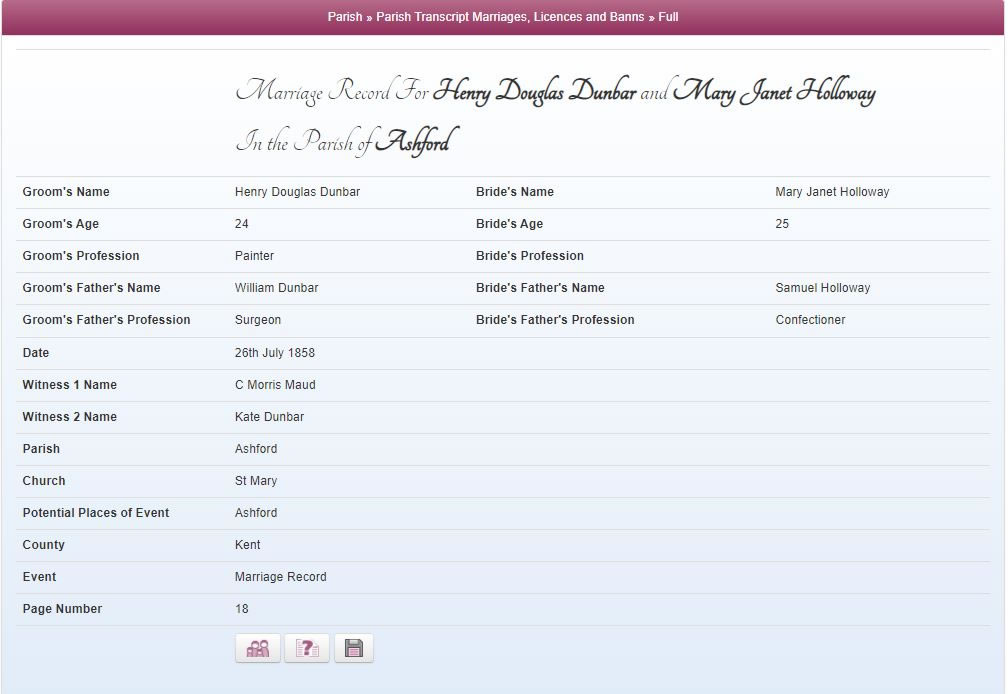
Ed then wanted to find out if Jessie’s father, Henry Dunbar, had been born in Scotland but what he found was that Henry was also from Kent. Henry’s father, William, however, is of more interest as he was recorded on the marriage certificate as an Assistant Surgeon on HMS Scarborough. This then is the Royal Navy Surgeon that Ed had been told about.
To find out more about his 3x great grandfather, William Dunbar, Ed met with the historian Simon Wills at Portsmouth Historic Dockyard. Simon was able to explain to Ed that while his ancestor did indeed serve on HMS Victory it wasn’t until 1826 and so that was twenty or so years after Nelson had died at the Battle of Trafalgar. Simon had discovered a service record that he showed to Ed, who realises from reading it closely that his ancestor remained an Assistant Surgeon throughout his Royal Naval career. William Dunbar did, however, see action on HMS Piercer in 1813, towards the end of the Napoleonic war with France. The record also shows that there is a gap in the service record between 1834 and 1843 after which William returned to the Navy. We can search the military records on TheGenealogist to find William Dunbar in the 1850 Navy List and this indicates that his seniority ran from 8 May 1811.
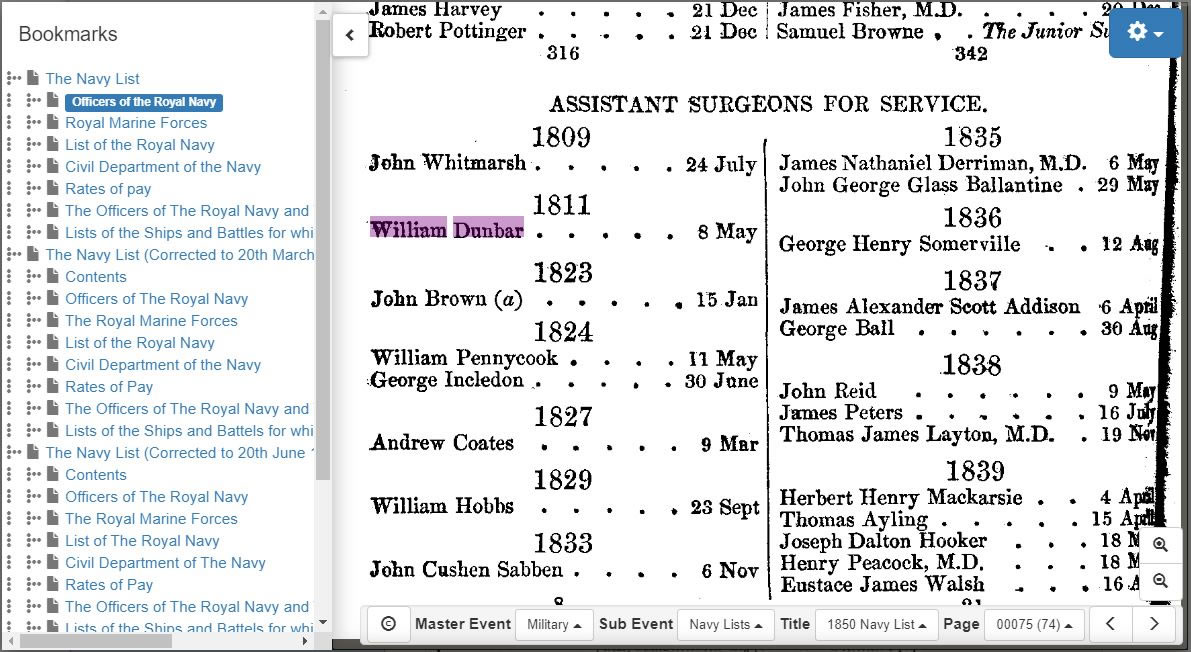
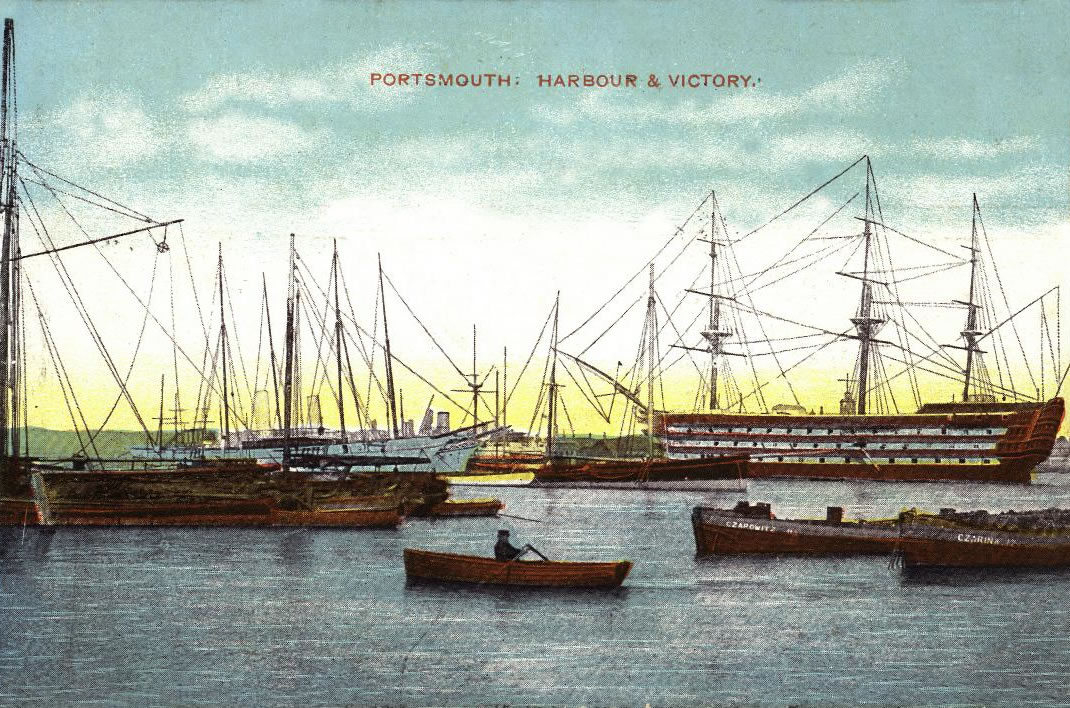
The 1841 census for Kent that can be found on TheGenealogist, records William, his wife and eight children in Hern. A newspaper record for the same year discovered by the TV programme indicates that he had become the Surgeon for the Blean Union Workhouse and it reported that two paupers had died under his care.

If we search the Map Explorer™ on TheGenealogist this allows us to locate the Blean Union Workhouse in Kent and to see its large black footprint on the map. The institution had been built in 1835 shortly after the new Poor Law had been brought in to reduce the expense of looking after the poor. Paupers who needed financial support were forced under this law to ask for admission into the workhouse as the authorities attempted to remove poor relief payments from those who would have received them previously in the community. Conditions and rules inside were designed to be a deterrent to all but the most desperate who were forced to seek admittance to the workhouse. Ed’s reading of the newspaper report leads him to conclude that his ancestor may have been an accessory to the ill treatment of the two paupers by the Master of the institution.
Access Over a Billion Records
Try a four-month Diamond subscription and we’ll apply a lifetime discount making it just £44.95 (standard price £64.95). You’ll gain access to all of our exclusive record collections and unique search tools (Along with Censuses, BMDs, Wills and more), providing you with the best resources online to discover your family history story.
We’ll also give you a free 12-month subscription to Discover Your Ancestors online magazine (worth £24.99), so you can read more great Family History research articles like this!
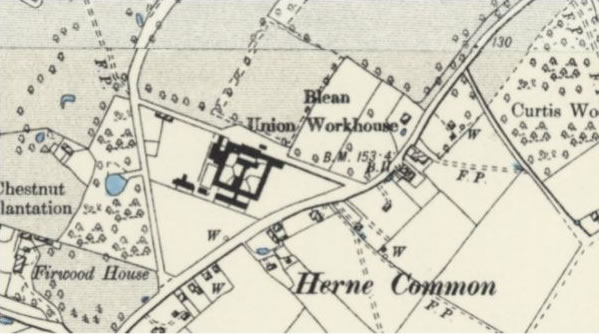
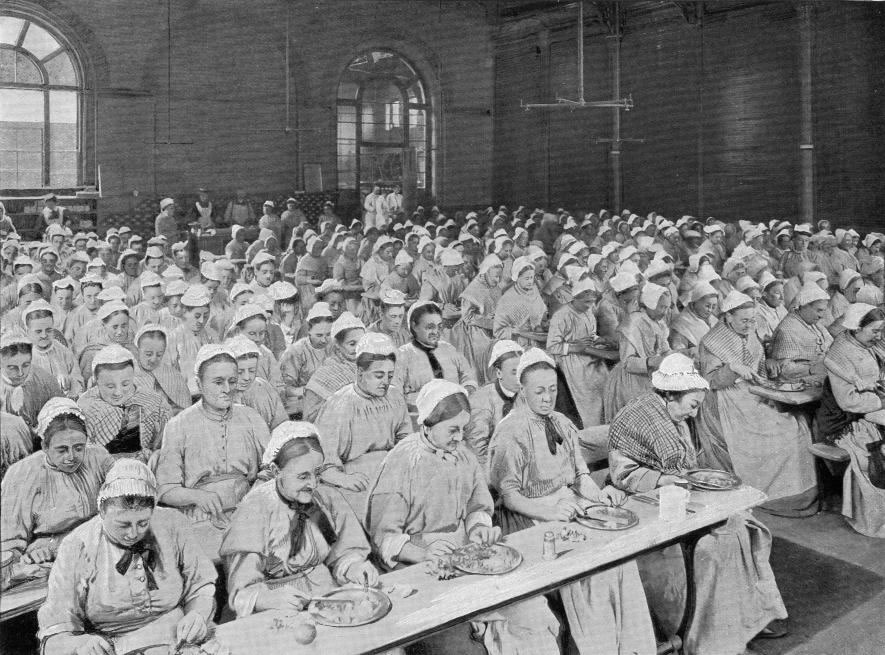
To pursue this line of research further Ed traveled down to Blean in Kent to meet Professor Alannah Tomkins at the building that had once been the workhouse where his ancestor was the doctor. She points out that the Master could ignore the Surgeon’s advice and it was often the case that the doctor was often made the scapegoat in these cases. Professor Tomkins revealed that while there may have been up to a hundred people in the workhouse at any one time there were, however, a further 4000 people in the surrounding parishes that the Surgeon was responsible for when they fell sick. It transpires that the number of doctors taking their own lives went up after 1840 as their workload was quite overwhelming.
Visiting the Kent Archives in Maidstone, Ed was able to read for himself a page from the minute book for the Blean Union on the 11th May 1843. This detailed that the Governor (Master) of the Workhouse had complained to the Board of Guardians that William Dunbar had taken improper liberties with the Master’s eldest daughter, a girl of about 16. The minutes reveal that Ed’s ancestor had admitted to having kissed the girl several times, promised her a ring and that he had also “pulled her about” but William Dunbar denied an even more serious accusation of exposing himself to her.
Ed was shocked at hearing about the behaviour of his ancestor and was also horrified to hear from Professor Alannah Tomkins that in those times gentlemen were able to treat their social inferiors in such a way. It was explained to him that at this time gentlemen were regularly applauded as they left the court once they were acquitted, even when it was clear that they had taken sexual liberties with the victim. All of what he has been told sits very uncomfortably with Ed. He then saw another document from the Kent Archives; it transpires that on 18th May 1843 William Dunbar resigned as Surgeon for Blean Union and so that was the end of his association with the institution, its inmates and its staff. Notwithstanding that it was a different time Ed is appalled at what he had found out about William Dunbar, though he remains proud at least of his ancestor’s public service to the country in the navy.
The Maternal ancestor
Having suffered a rollercoaster of emotions regarding his paternal side discoveries, Ed then wanted to explore his maternal line and the family of his mother, Carolyn Riseborough. To begin this line of research he went to Norwich Guildhall and met up with the professional genealogist Celia Heritage. This side of the family had been traced by Celia back a number of generations to Christopher Green circa 1780 and Mary Rivett 1782. We are able to use TheGenealogist’s Norfolk Parish Records to find the banns and the record of the marriage for Ed’s ancestors that took place in the parish church at Kenninghall.
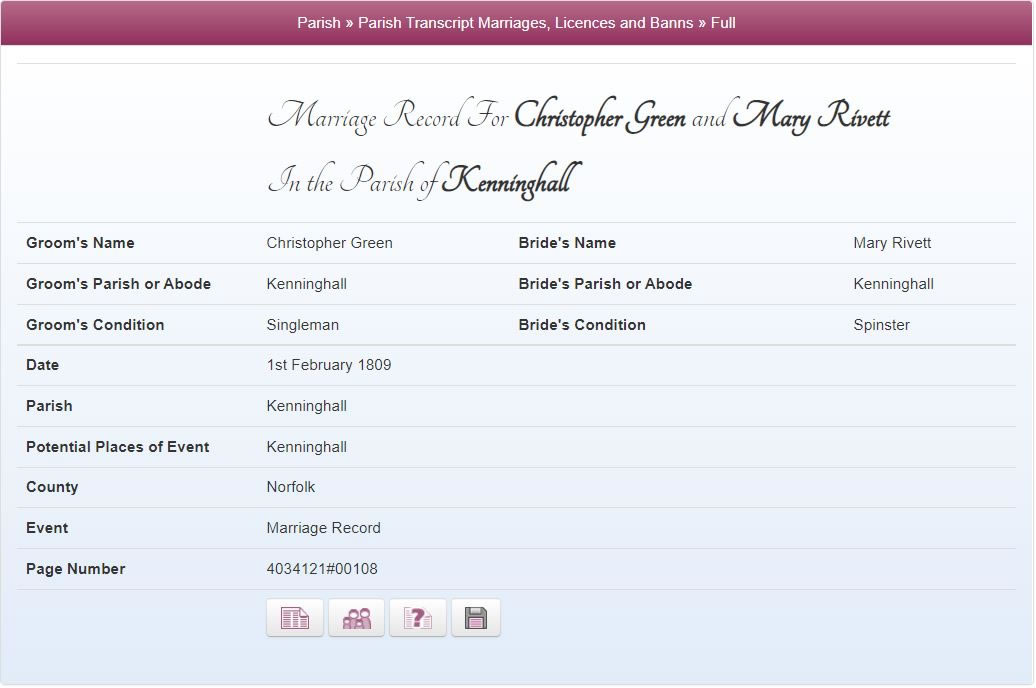
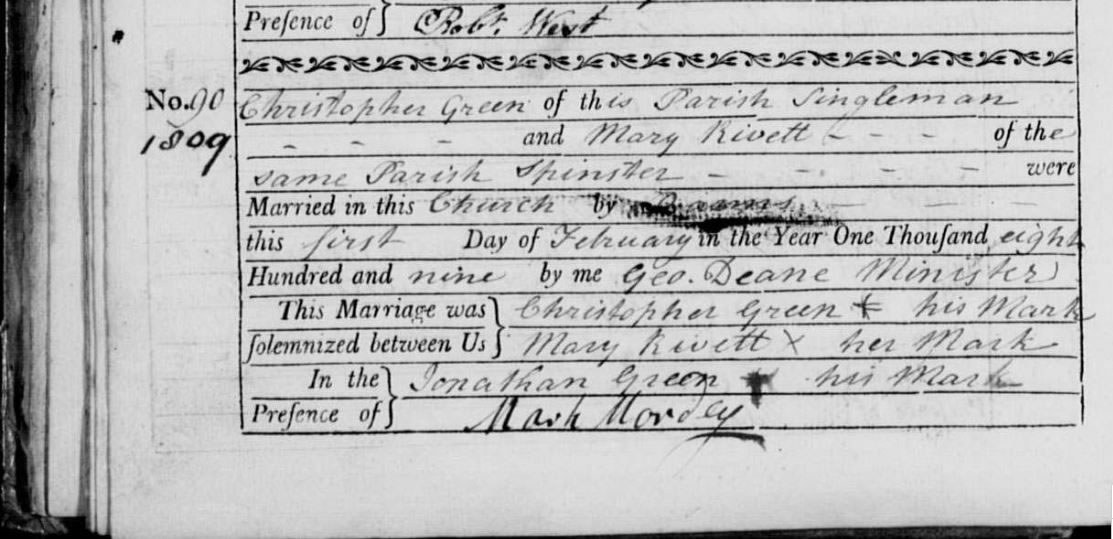
Christopher Green, Ed’s 4 x great grandfather, had been an agricultural labourer. Celia Heritage had been able to find this forebear of Ed’s, mentioned in the Norfolk Chronicle dated 1822. The newspaper had been reporting on the Norfolk Sessions and Ed’s ancestor, along with a number of others, were “severally indicted for having riotiosly and tumultuously assembled with other persons at Winfarthing on 19th September last, and removing, taking away, and destroying a Threshing Machine the property of Robert Copping.”
When Ed heard of this he smiled at the thought of a political act, a rebellion by workers against the machines that would take their traditional winter livelihoods away. A visit into the courtroom at the Norwich Guildhall caused Ed to muse on just how his ‘Ag Lab’ ancestor would have felt as he was subjected to the trial in October 1822. It was probably a difficult experience for a man from the countryside to come up against this formal court in Norwich. Christopher Green’s trial ends with him getting given a sentence of a year inside the Swaffham Bridewell. But Ed questions in his mind if his ancestor had actually been political. As he stood in the dock at Norwich Ed wondered if Christopher had been thinking “Do to me what you will!” or had it been more like “What have I done?!”
Access Over a Billion Records
Subscribe to our newsletter, filled with more captivating articles, expert tips, and special offers.
After visiting an example of a Bridewell, Ed’s family history research then took him to Winfarthing. Here at the Lodge farm he was told by Dr Rose Wallis that his 4x great grandfather in 1832 had been accused of setting fire to the manor farm called Winfarthing Lodge this is the very farm on which Ed and Rose are meeting. According to the report, all the farm buildings had been totally destroyed and Ed’s ancestor was accused of arson, a very serious offence punishable by death. Ed was then told that the burning of the manor farm had taken place just two years after the Swing Riots had begun in England. These protests had been a widespread uprising in 1830 by agricultural workers in southern and eastern England, in protest at agricultural mechanisation. The agricultural labourers experiencing poverty were at a disadvantage as the farmers had the upper hand and could be bad at paying their workers. As a consequence, social relations had broken down to the point of rural war. It was in this context that in 1832 Christopher Green was accused of the crime of arson and sent before the magistrates at a hearing held at the King’s Head, Diss. This time he was committed for trial at Norwich Castle for the next Assizes, a higher court than his last brush with the law reflecting that the offence he had been accused of was a capital crime.
Having been charged with arson, this offence never proceeded to trial; however Christopher was then charged with stealing a ewe sheep and this was what he appeared before a judge and jury for. While Ed was somewhat relieved for his ancestor, he then discovered that it is nonetheless a serious crime as well and was still punishable by death. It emerged that the research had discovered that one of the other prisoners arrested for the arson attack, a man named Hubbard, had turned Crown evidence and so when Ed was told that his 4x great grandfather was found not guilty he was very relieved. William had been able to return home to Winfarthing, an innocent man.
The scene of the crime!
We are able to use our unique Tithe Collection on TheGenealogist, in association with The National Archives, to find out where Ed’s ancestors lived in this part of Norfolk. As we have added this recordset to our Map Explorer™ we can now use the georeferenced maps to switch between the Victorian maps used for the Tithe Survey in 1840 and modern ones to pinpoint exactly where it was in Winfarthing that Christopher Green lived. From the apportionment books we are able to determine that he lived in a cottage on the road out of the village in the decade after he had been accused of setting fire to the nearby farm.
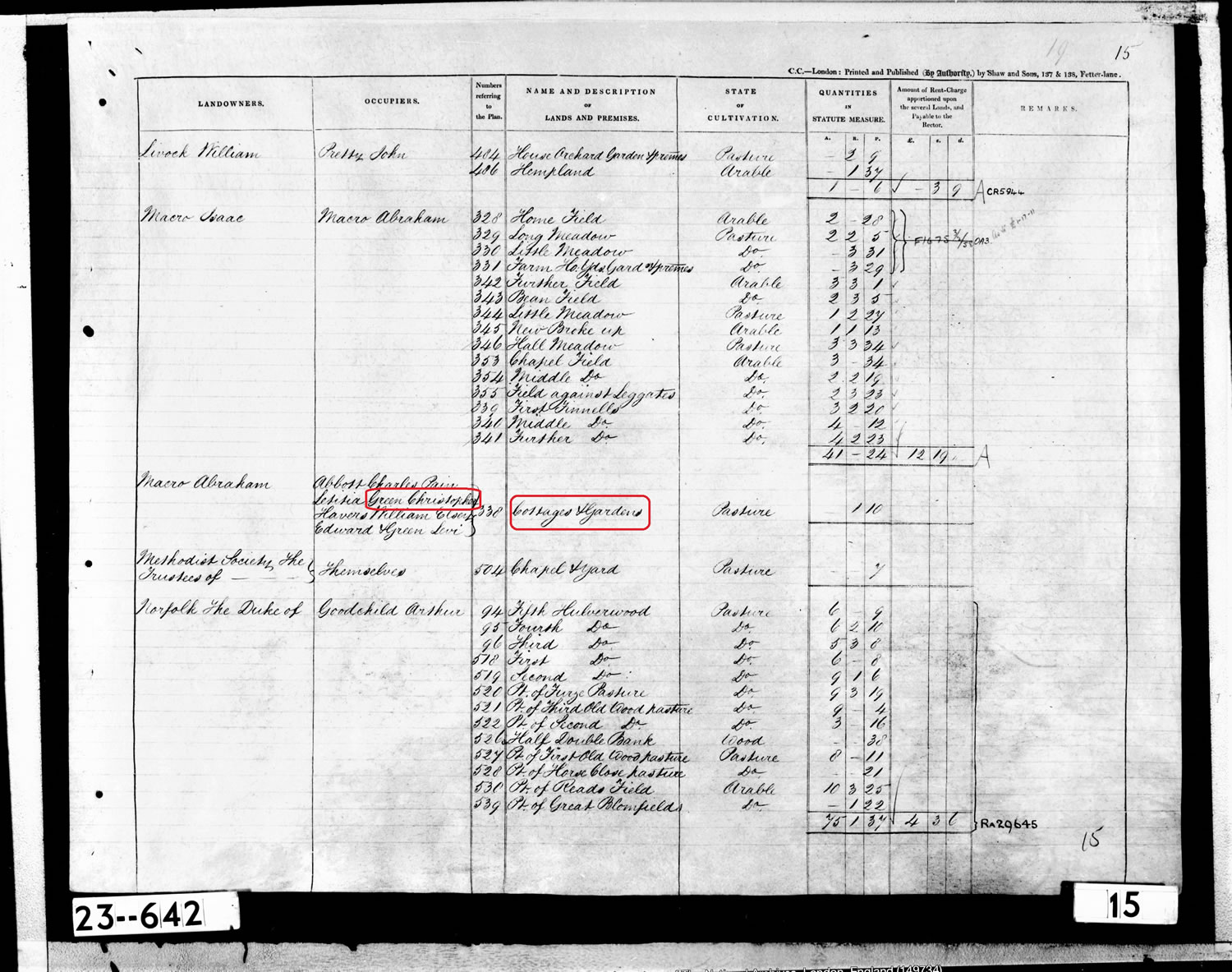
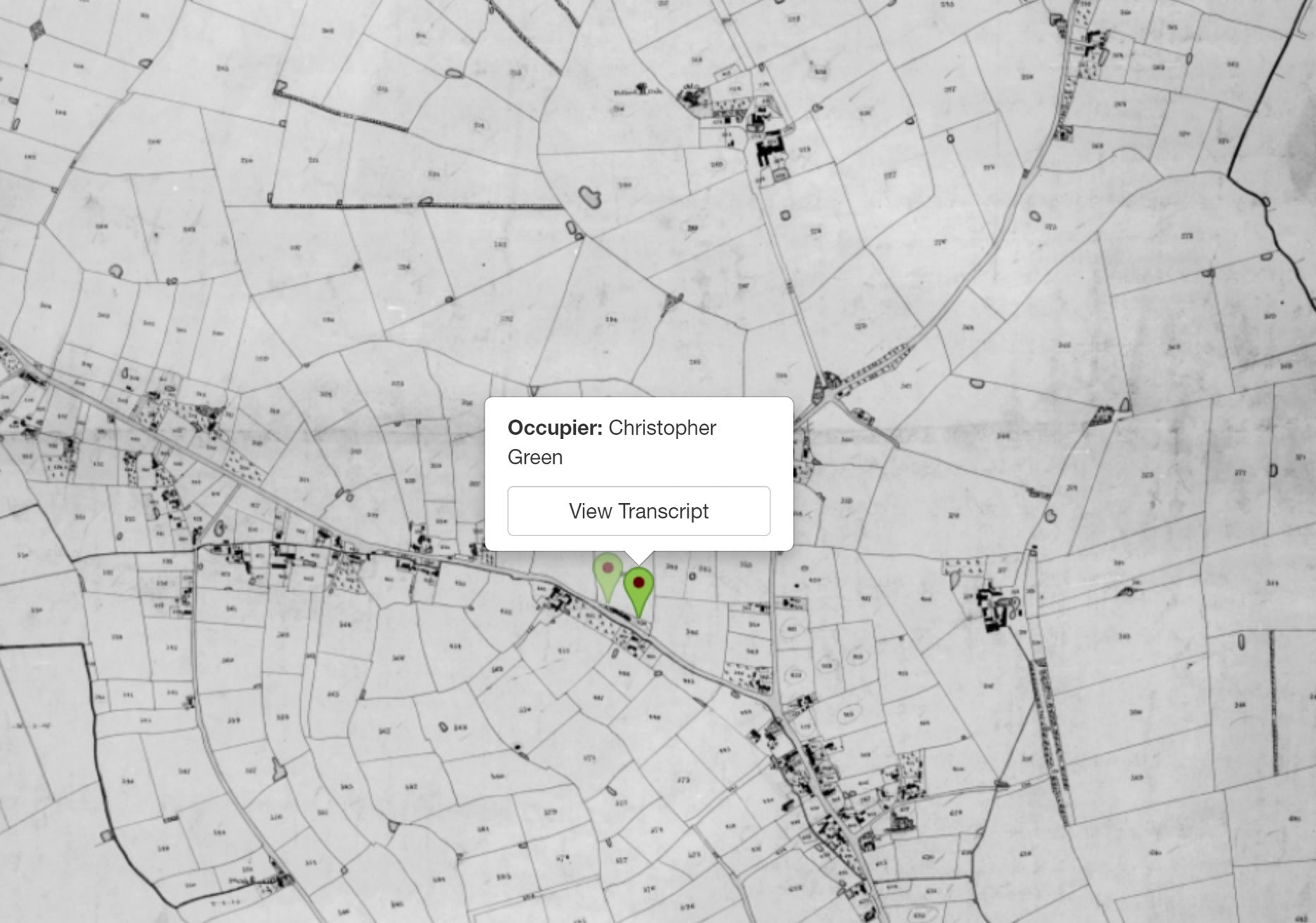
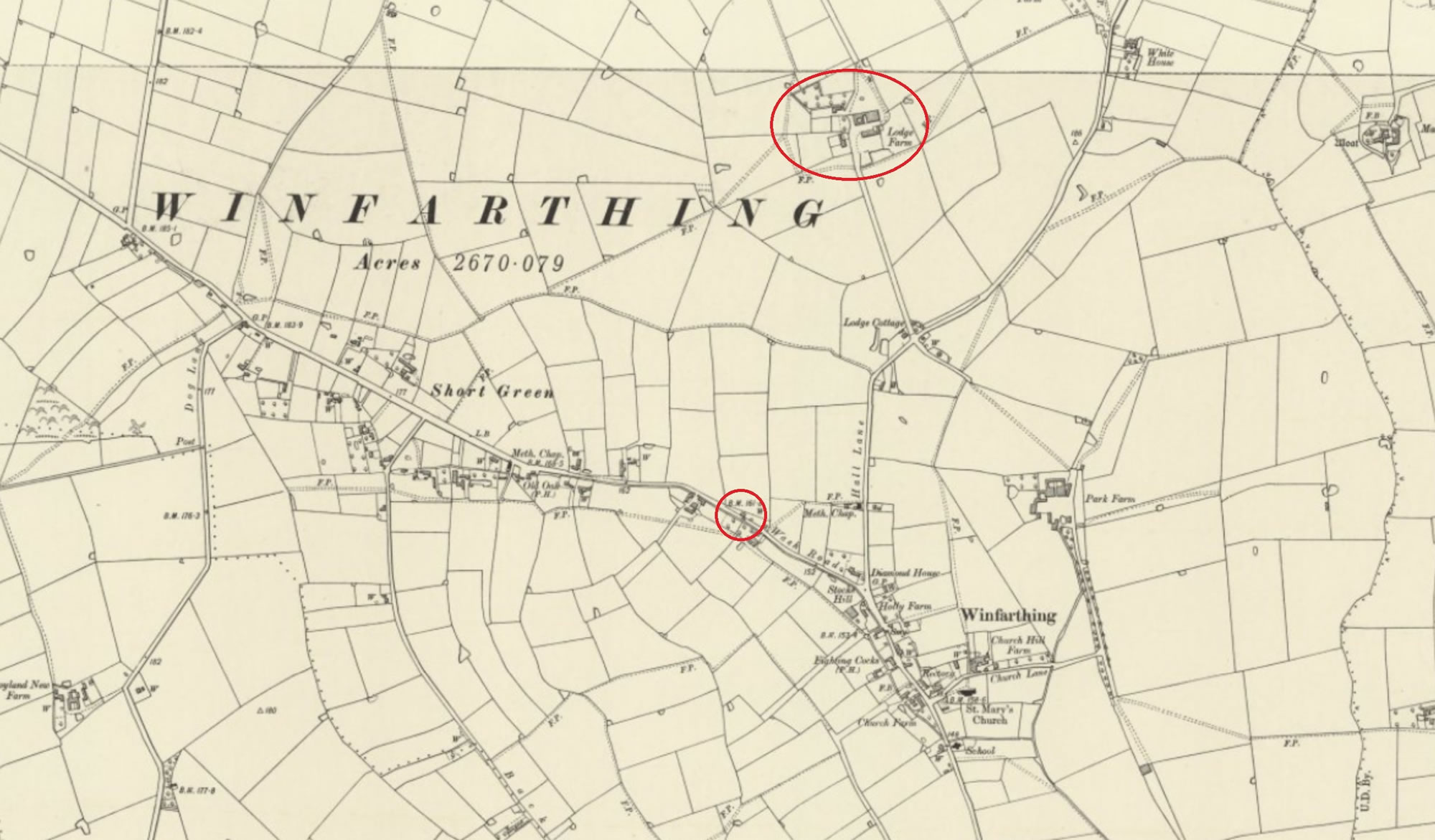
Now that we have established where he was living at the time of the National Tithe Survey, we can scan the maps on TheGenealogist’s Map Explorer™ to go on to find Winfathering Lodge Farm and to see just how close Christopher’s home had been to the site of the alleged crime, albeit in a record taken a decade later in 1840.
What became of Ed’s 4x great grandfather? The records show that Christopher Green died in the Kenninghall Workhouse when he was 80 and to Ed’s relief it was simply of old age. A search of the Norfolk Parish Records on TheGenealogist show the death of Christopher and his abode at the time at the workhouse. Happily for Ed, his family history research had found for him an activist campaigner in his family tree that he could be proud of, making up for the disappointment he had experienced with the forebear from his paternal line.
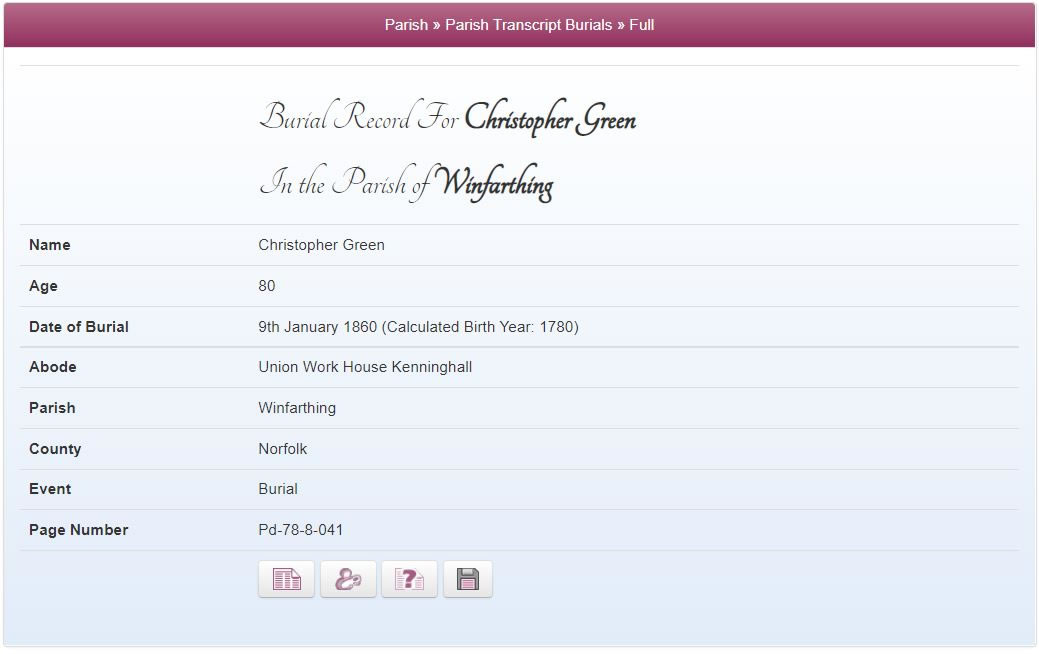
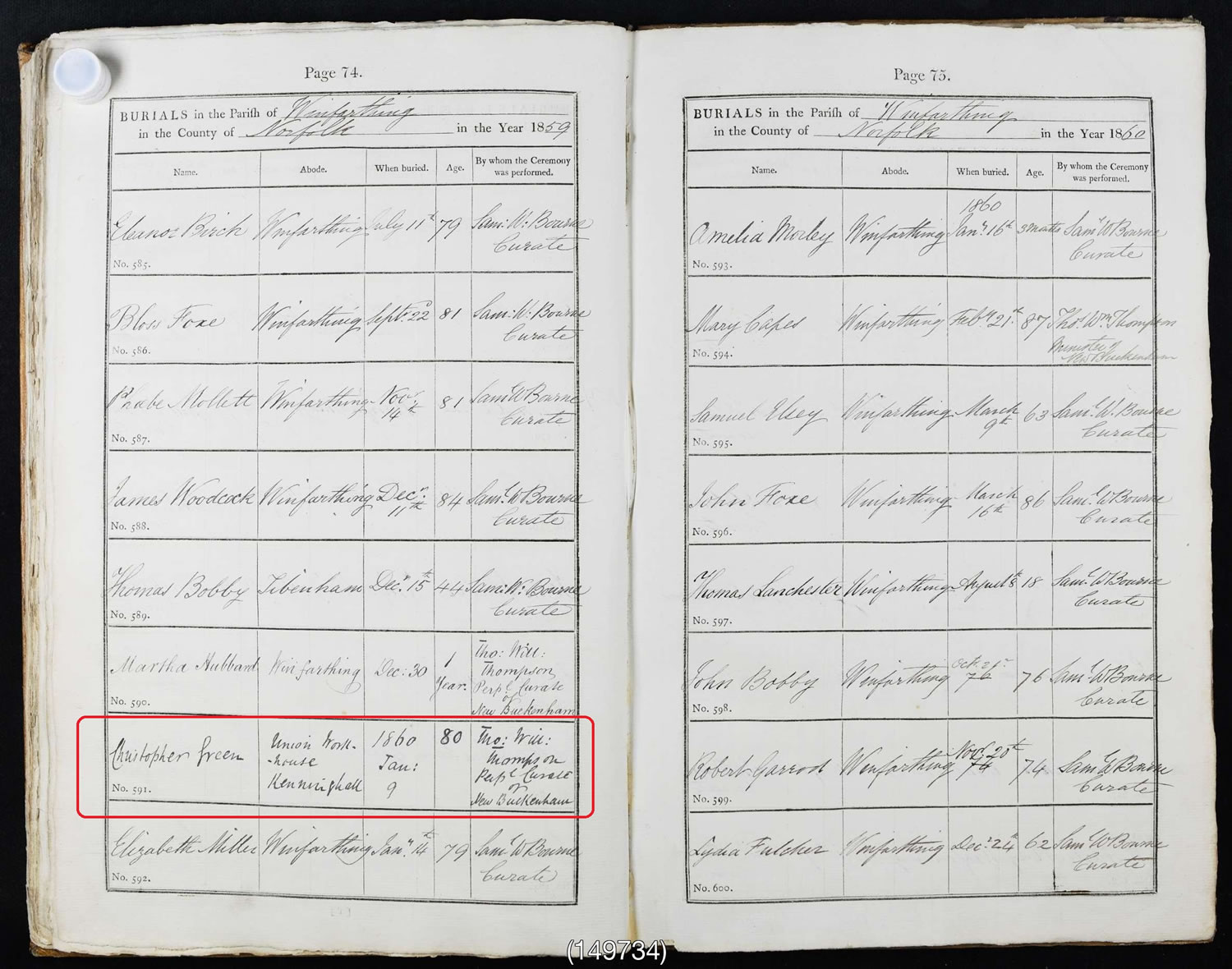
In this celebrity genealogical exploration of the records we have been able to use some of our own resources from TheGenealogist’s website to add to that found in the Who Do You Think You Are? programme. From Census entries, Parish Records, our unique Tithe Record Collection married to georeferenced maps on our Map Explorer™, together with evocative pictures from the Image Archive on TheGenealogist, we have been able to discover some more about Ed Balls’ ancestors to compliment the television investigation.
Sources:
Press Information from Multitude Media on behalf of the programme makers Wall to Wall Media Ltd
Extra research and record images from TheGenealogist.co.uk
BBC/Wall to Wall Ltd Images






